
A Coworking Space in London Champions the Art of Low-Impact Retrofitting
Words by Eric David
Location
London, United Kingdom
A Coworking Space in London Champions the Art of Low-Impact Retrofitting
Words by Eric David
London, United Kingdom
London, United Kingdom
Location
Despite increased investment in energy efficiency and lower energy intensity, the building and construction sector’s energy consumption and CO2 emissions have rebounded from the COVID-19 pandemic to an all-time high, according to a UN report. To address this issue, a broader approach is needed that emphasizes not only energy efficiency in buildings but also the embodied energy in existing structures and the materials used for construction. Conscious of this requirement, London-based practice Material Works Architecture has adopted a low-impact design philosophy for the recently opened Sustainable Workspaces in London, which provide co-working spaces for a community of climate startups and entrepreneurs. The latest venture of the climate tech ecosystem Sustainable Ventures, the office spaces occupy a large part of the 5th floor of County Hall, a colossal, Grade II listed building and the former headquarters of the Greater London Council. Focusing on minimizing embodied energy, the project became a testing ground for innovative materials and techniques, demonstrating an alternative path for workspace retrofit.

Photography by Fred Howarth.
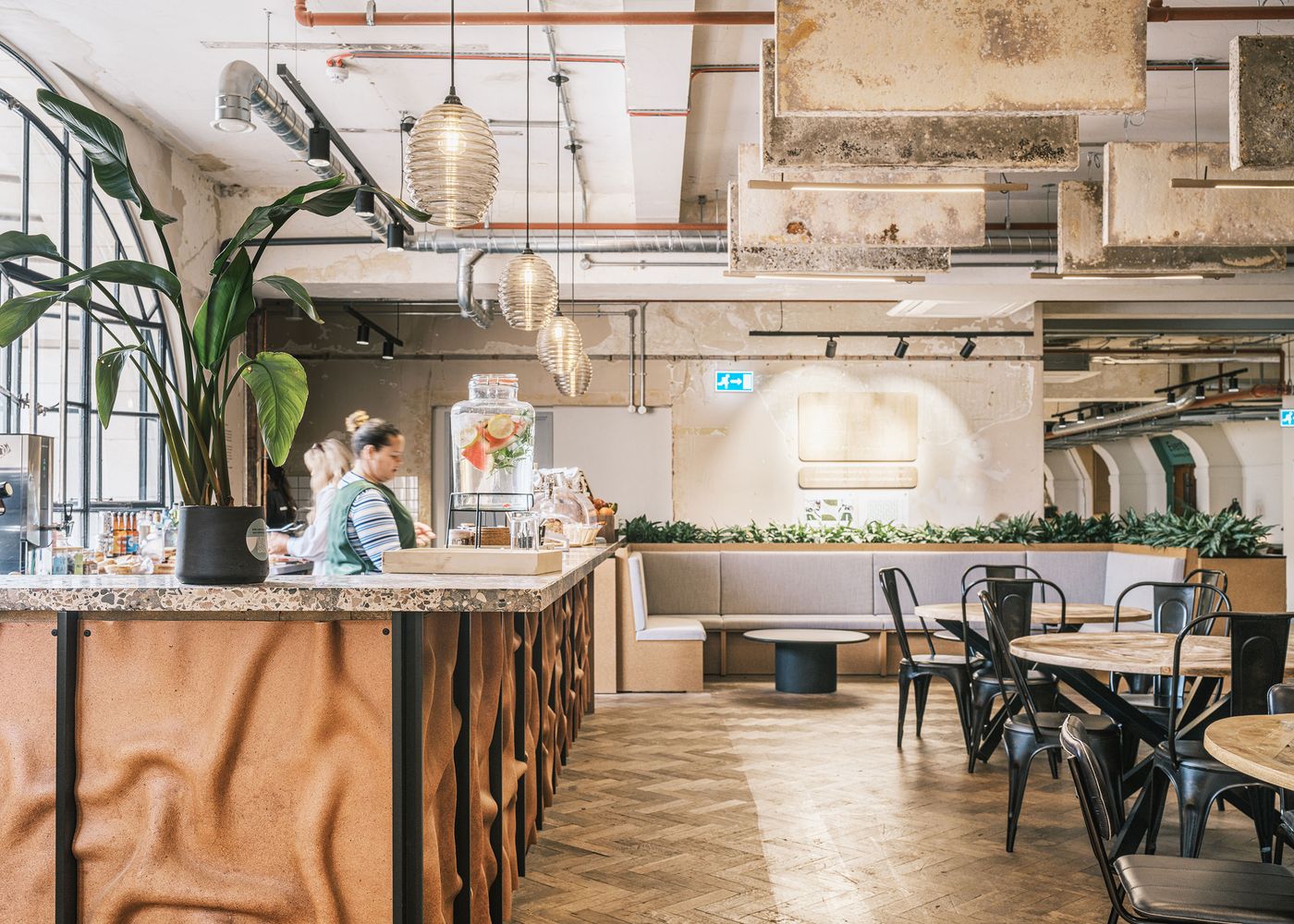
Photography by Fred Howarth.

Photography by Fred Howarth.
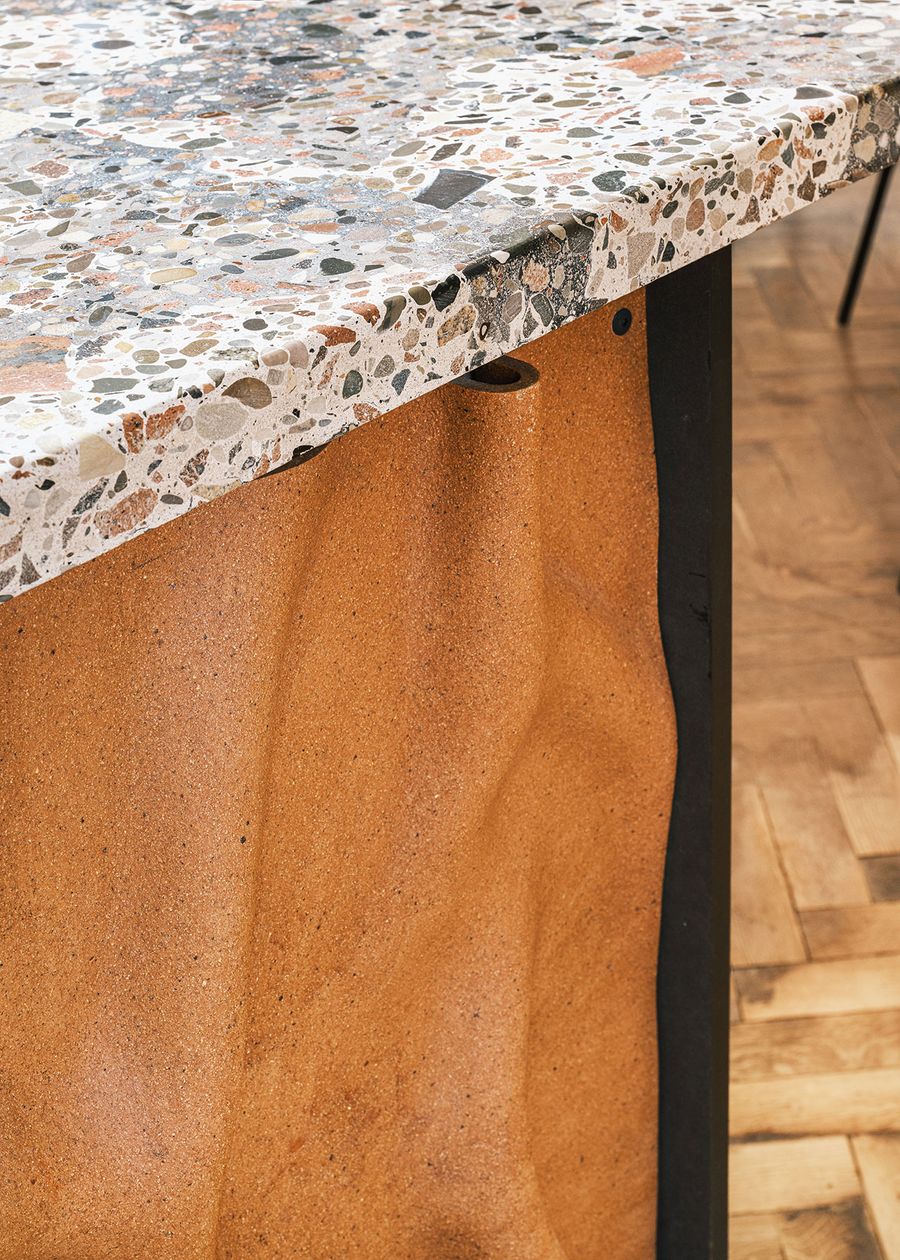
Photography by Fred Howarth.

Photography by Fred Howarth.
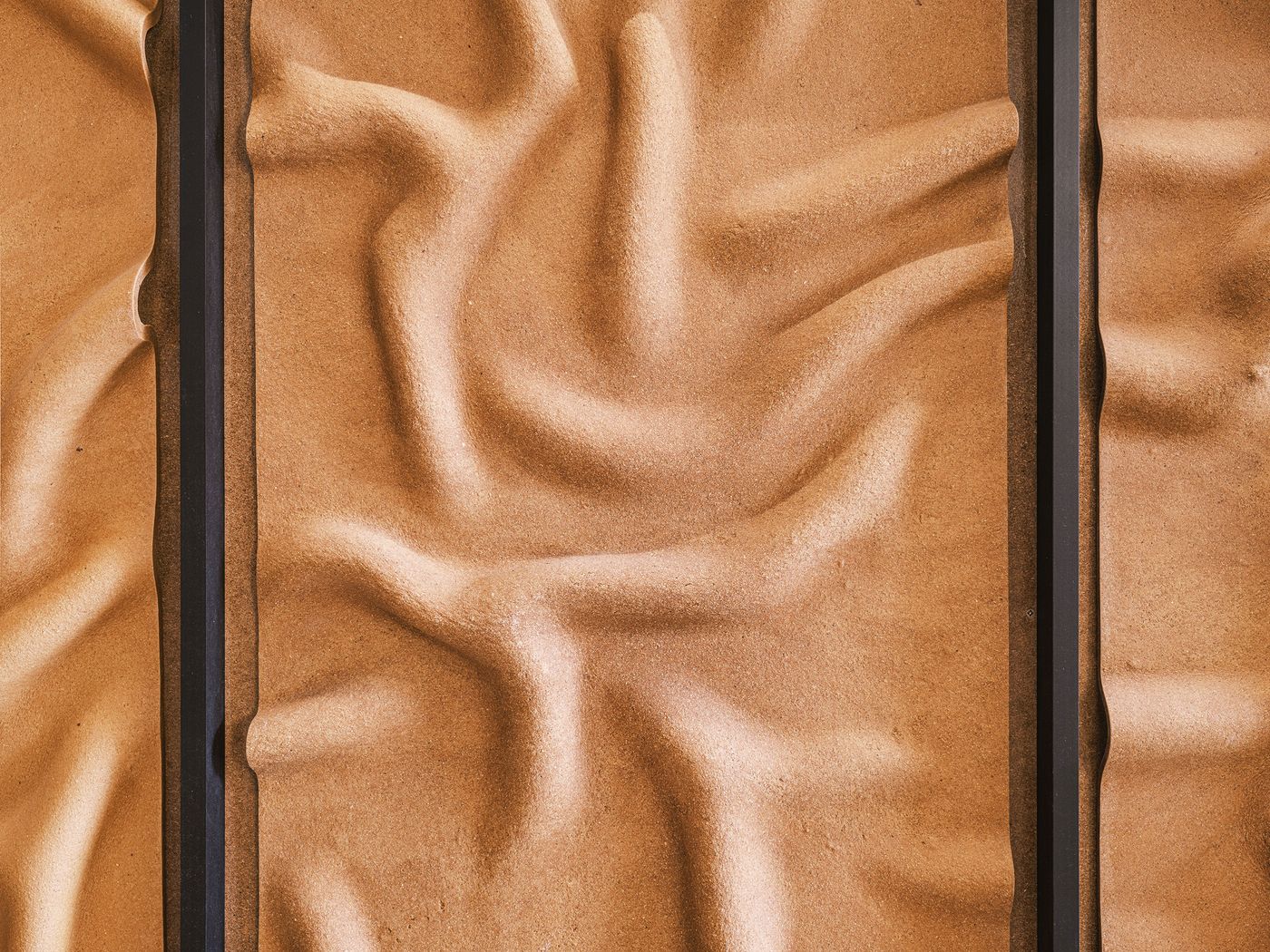
Photography by Fred Howarth.
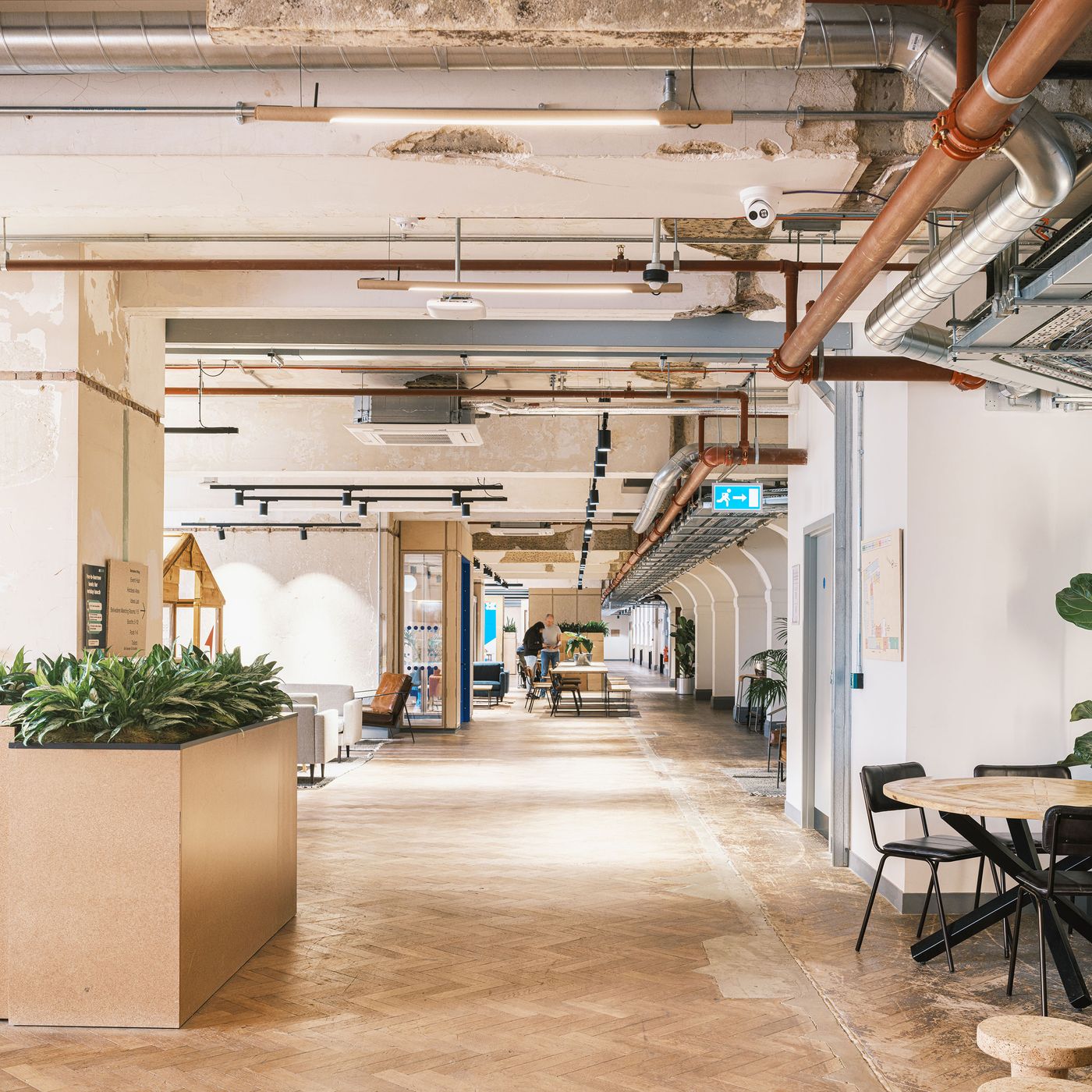
Photography by Fred Howarth.
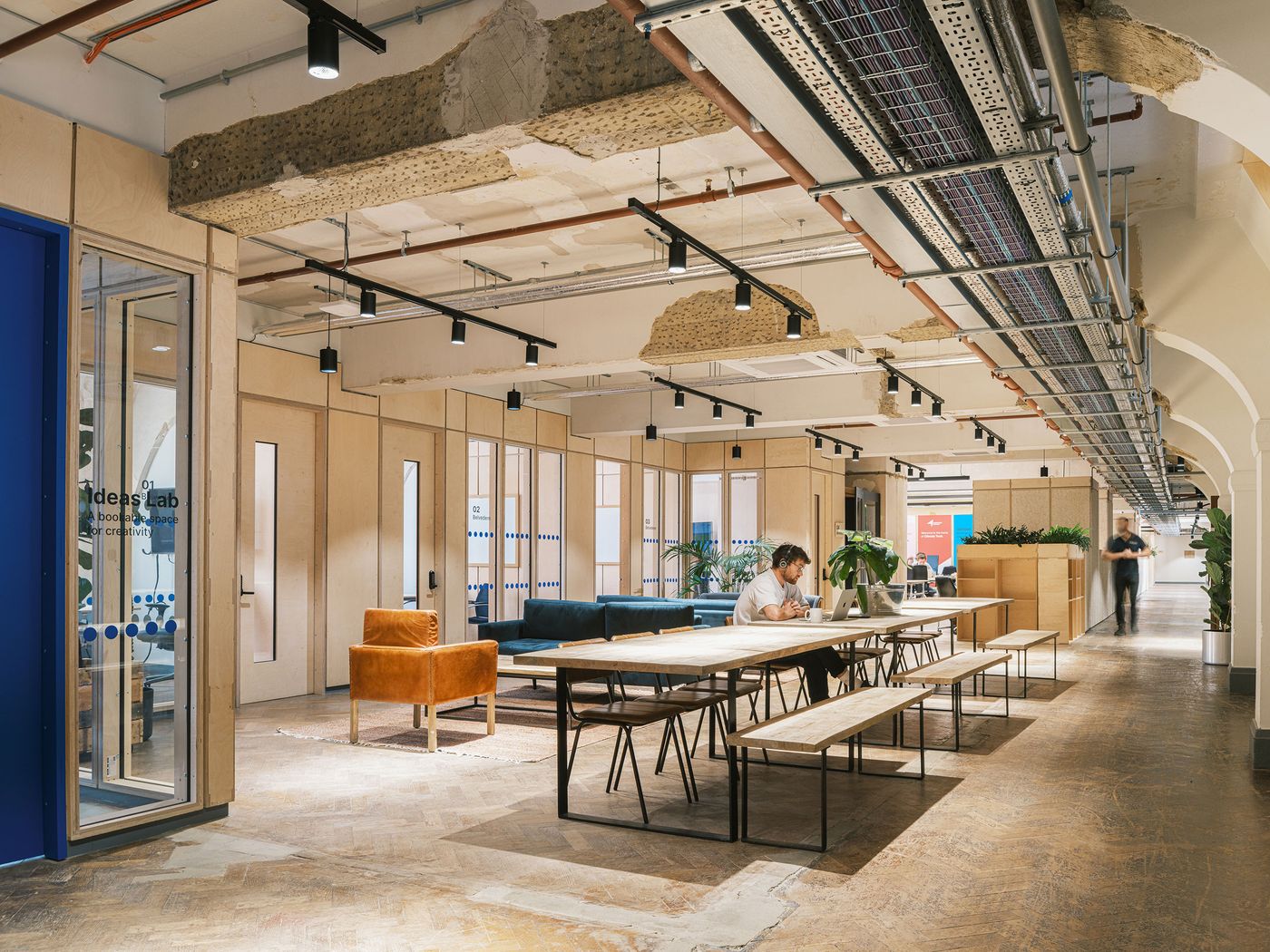
Photography by Fred Howarth.
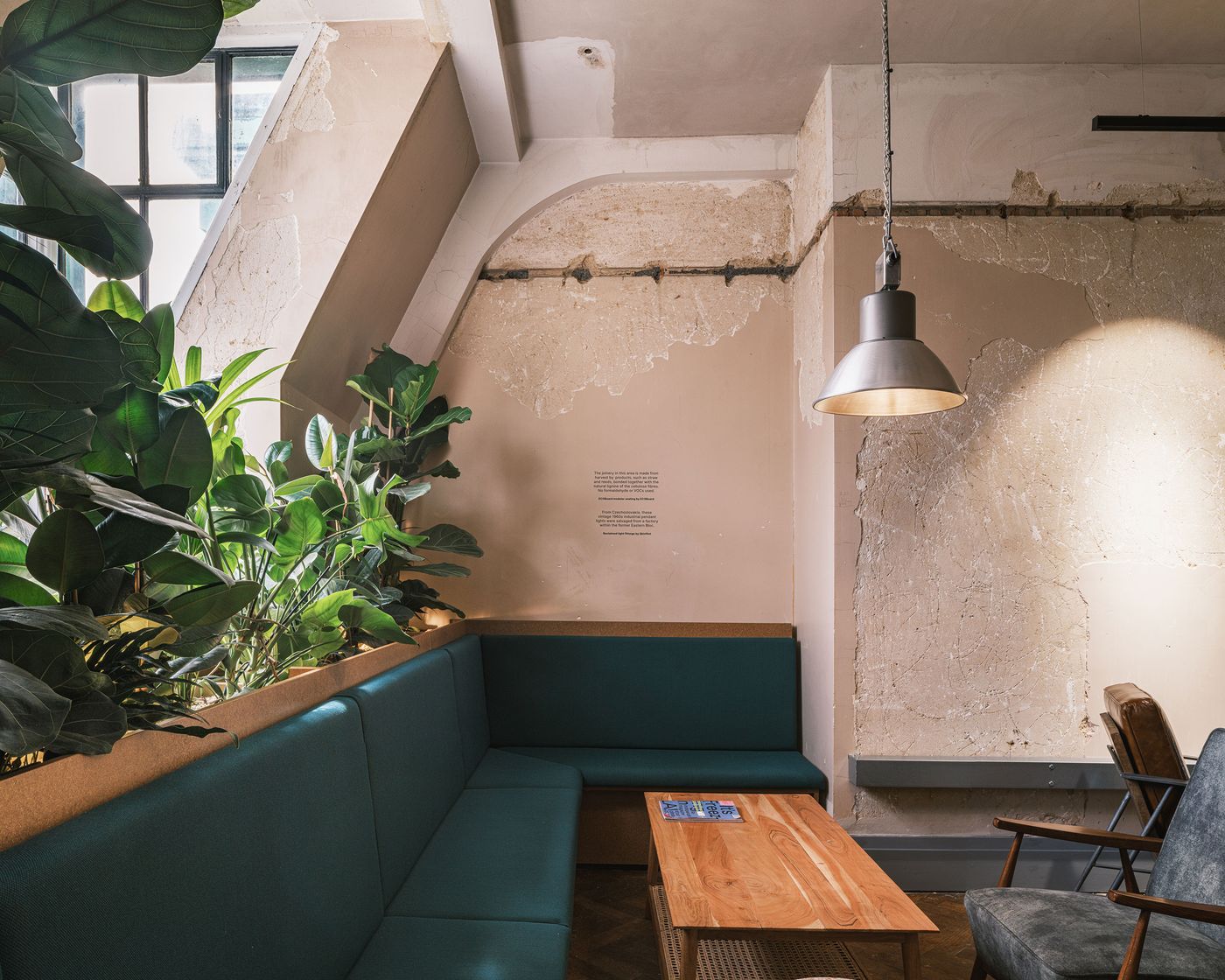
Photography by Fred Howarth.
The refurbishment of the existing spaces, which had been left untouched since the Greater London Council vacated the historic building in the 1980s, was underpinned by two principles: the reuse of existing materials wherever possible, and the design of adaptable and reusable interventions limited to those essential for the proposed uses and the comfort of users. In addition, the project also incorporated materials from waste streams, natural plant forms, and unwanted industrial by-products, and was furnished with reclaimed items.
All internal partition walls were designed as modular systems as part of a long-term project with Sustainable Workspaces to develop a fully demountable system. Produced by U-build using FSC certified birch and spruce plywood and natural sheep wool insulation, the modules have minimal mechanical fittings, which means they can easily be re-configured into different layouts, moved to new locations, or completely disassembled into reusable timber. In fact, a large portion used at County Hall were successfully de-mounted and moved from Sustainable Workspace’s previous location on a lower floor.
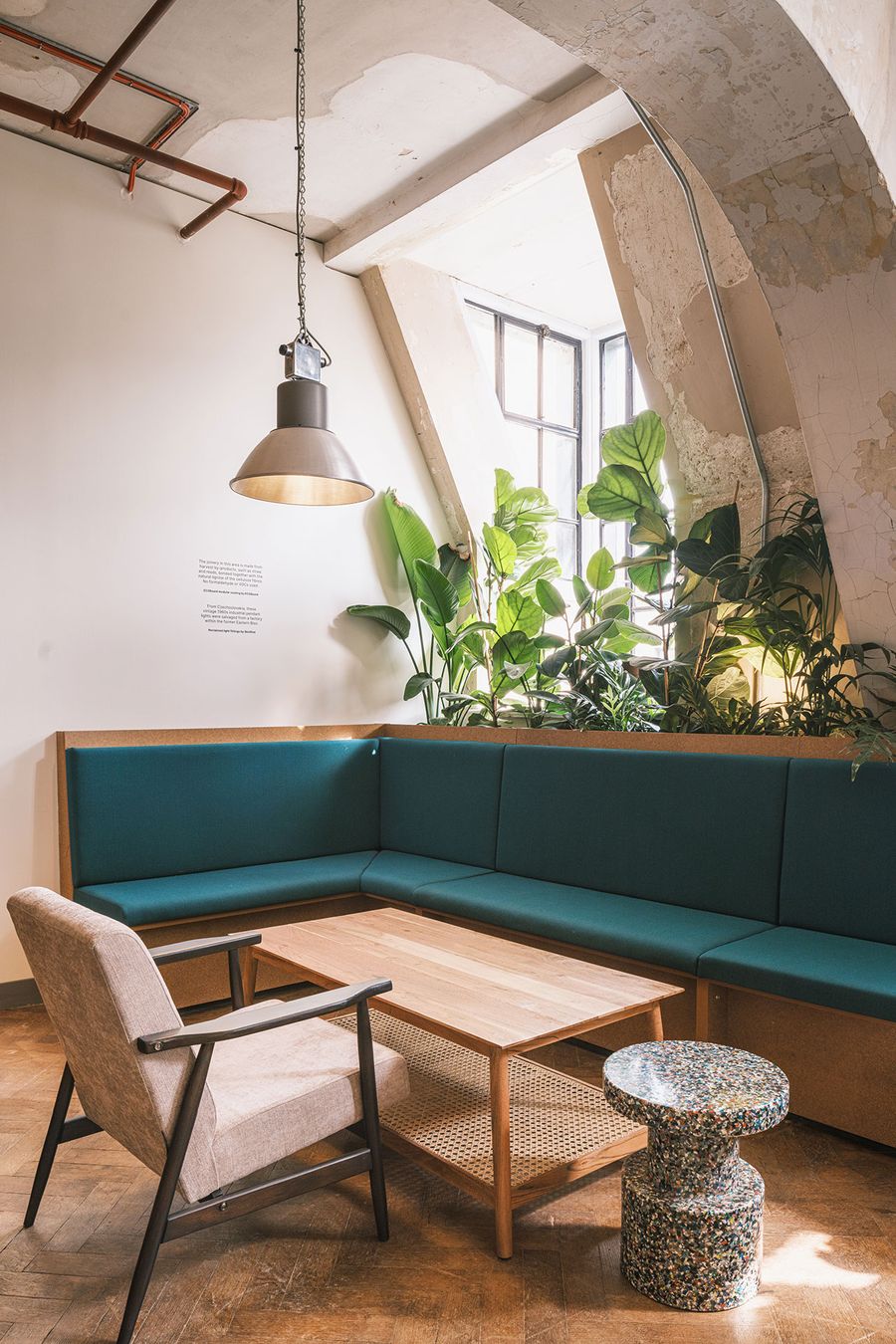
Photography by Fred Howarth.
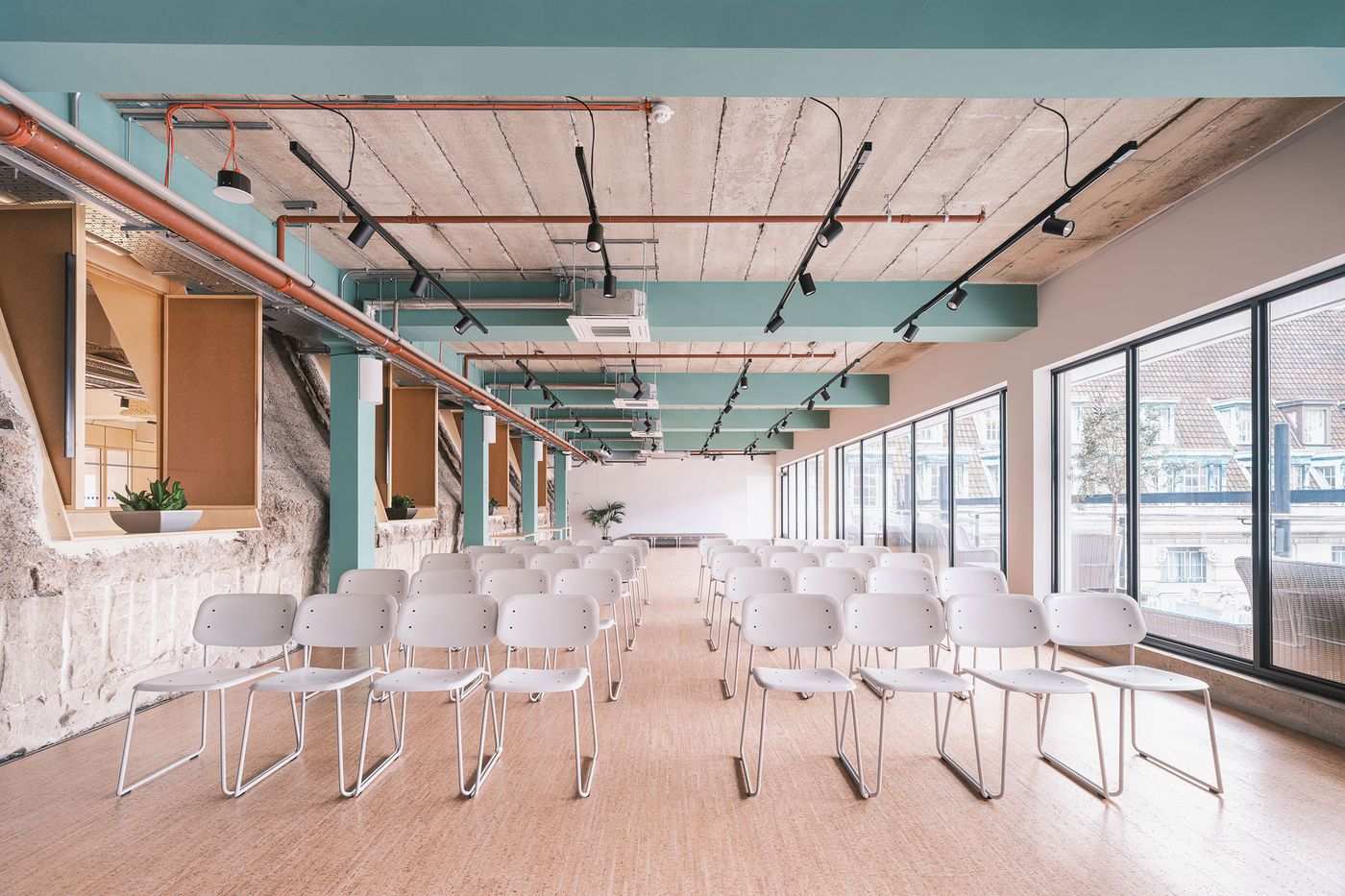
Photography by Fred Howarth.
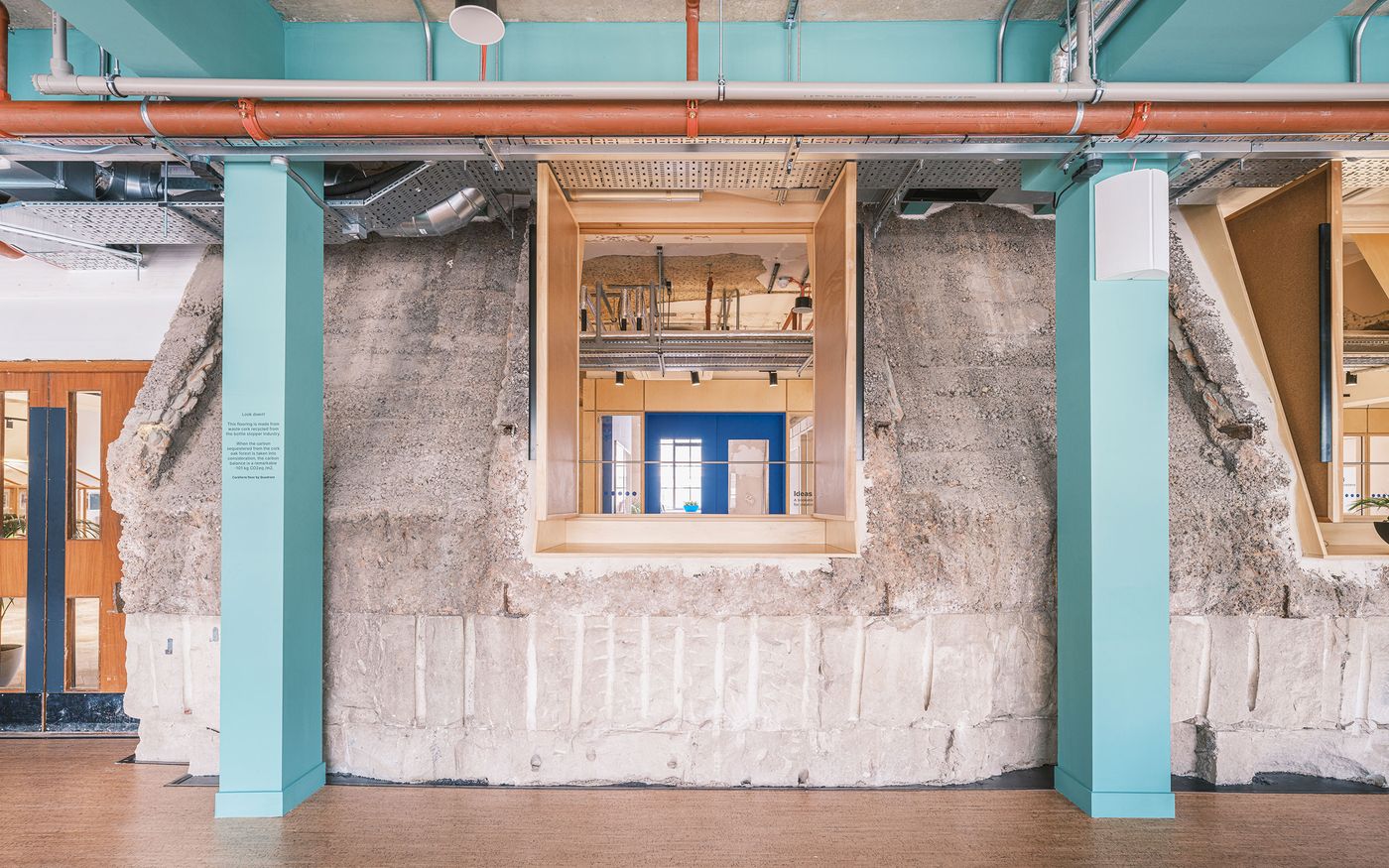
Photography by Fred Howarth.
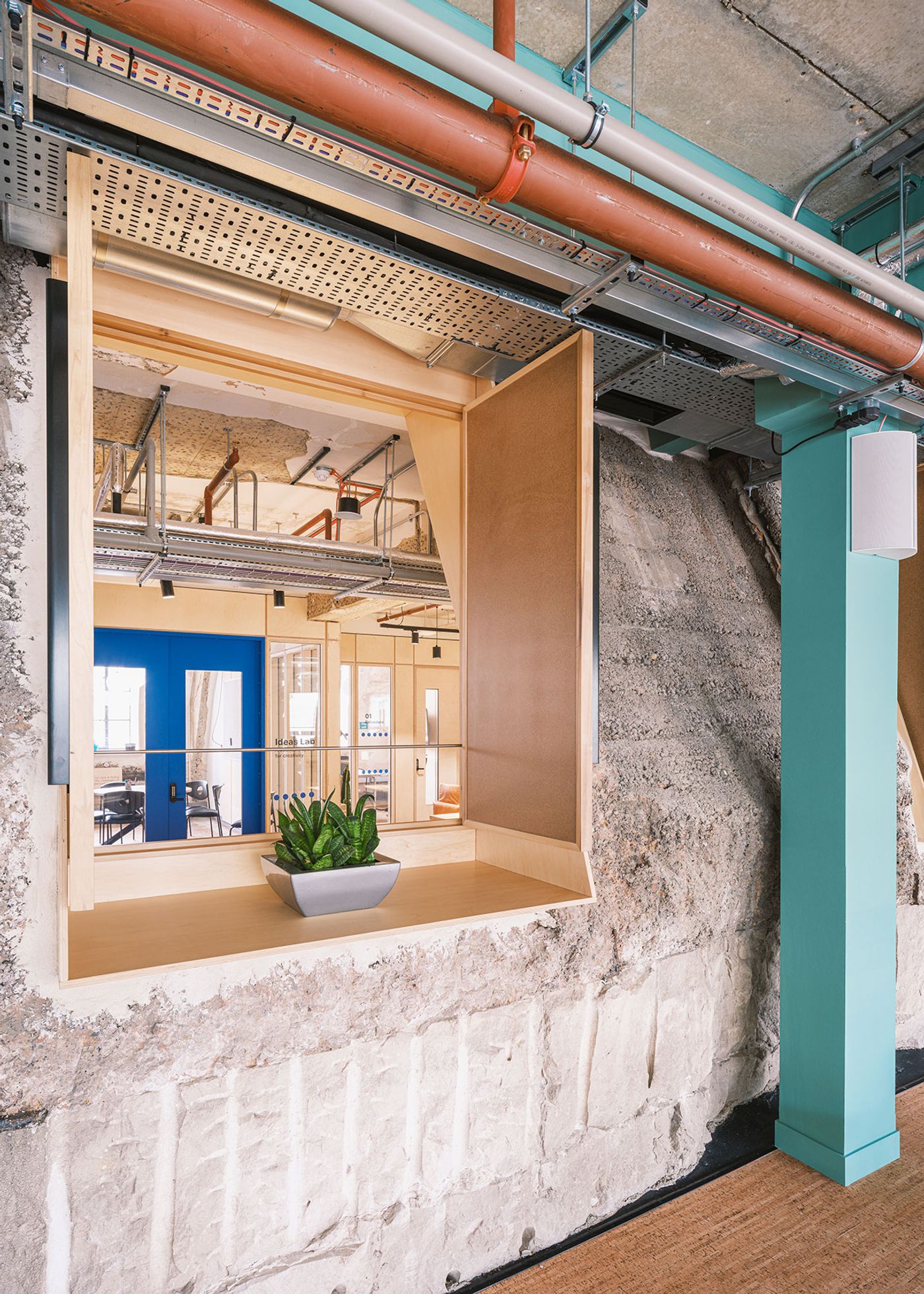
Photography by Fred Howarth.
As part of the light-touch retrofit, existing doors, windows, and flooring, including parquet flooring and terracotta floor tiling, were retained, with repairs limited only to defective areas. Decorative interventions were kept to a minimum, embracing instead an 'as found' aesthetic of raw, industrial finishes, weathered textures, and visible ducts and cable trays that reject uniformity in favour of character. The use of reclaimed materials like corrugated metal sheets and hardwood worktops for the kitchen island further enriches the 'as found' look, as does the use of materials made from agricultural or industrial by-products that allow for lower carbon yields. Examples of the latter include joinery finishes created from waste coffee and vegetables, carpentry using composite boards formed from agricultural waste, cork flooring, mycelium acoustic baffles, and a countertop formed from reclaimed building rubble.
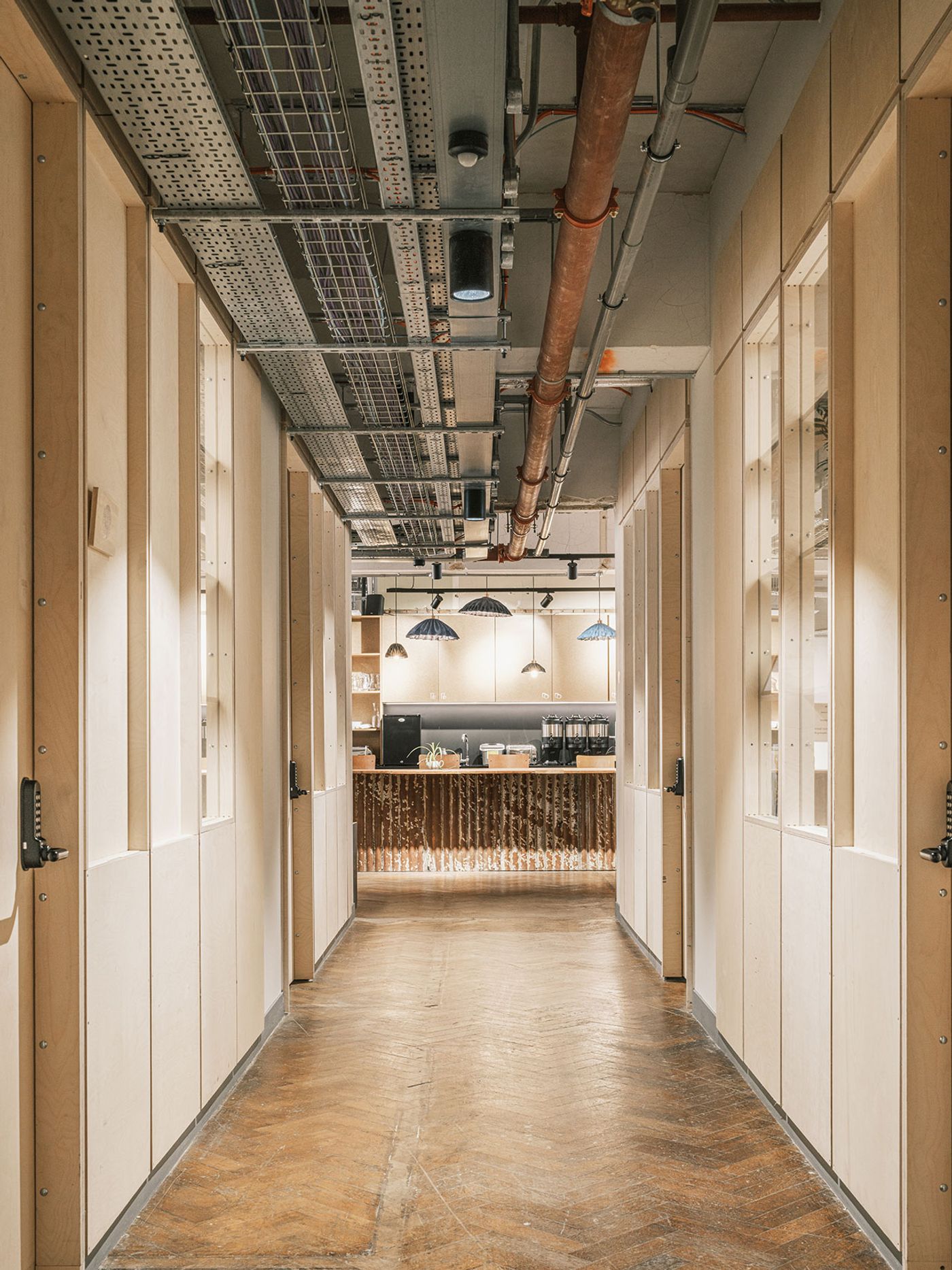
Photography by Fred Howarth.

Photography by Fred Howarth.
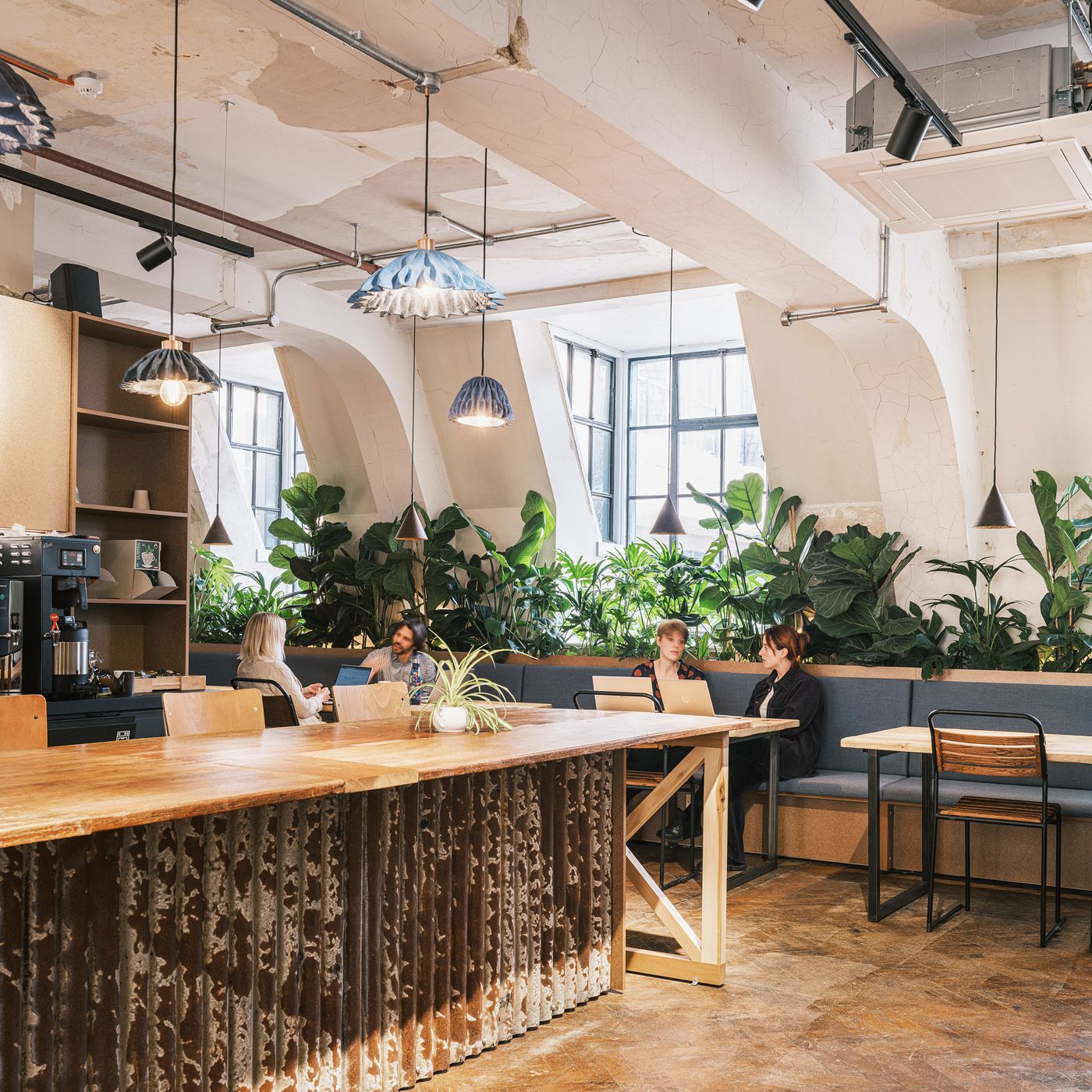
Photography by Fred Howarth.

Photography by Fred Howarth.
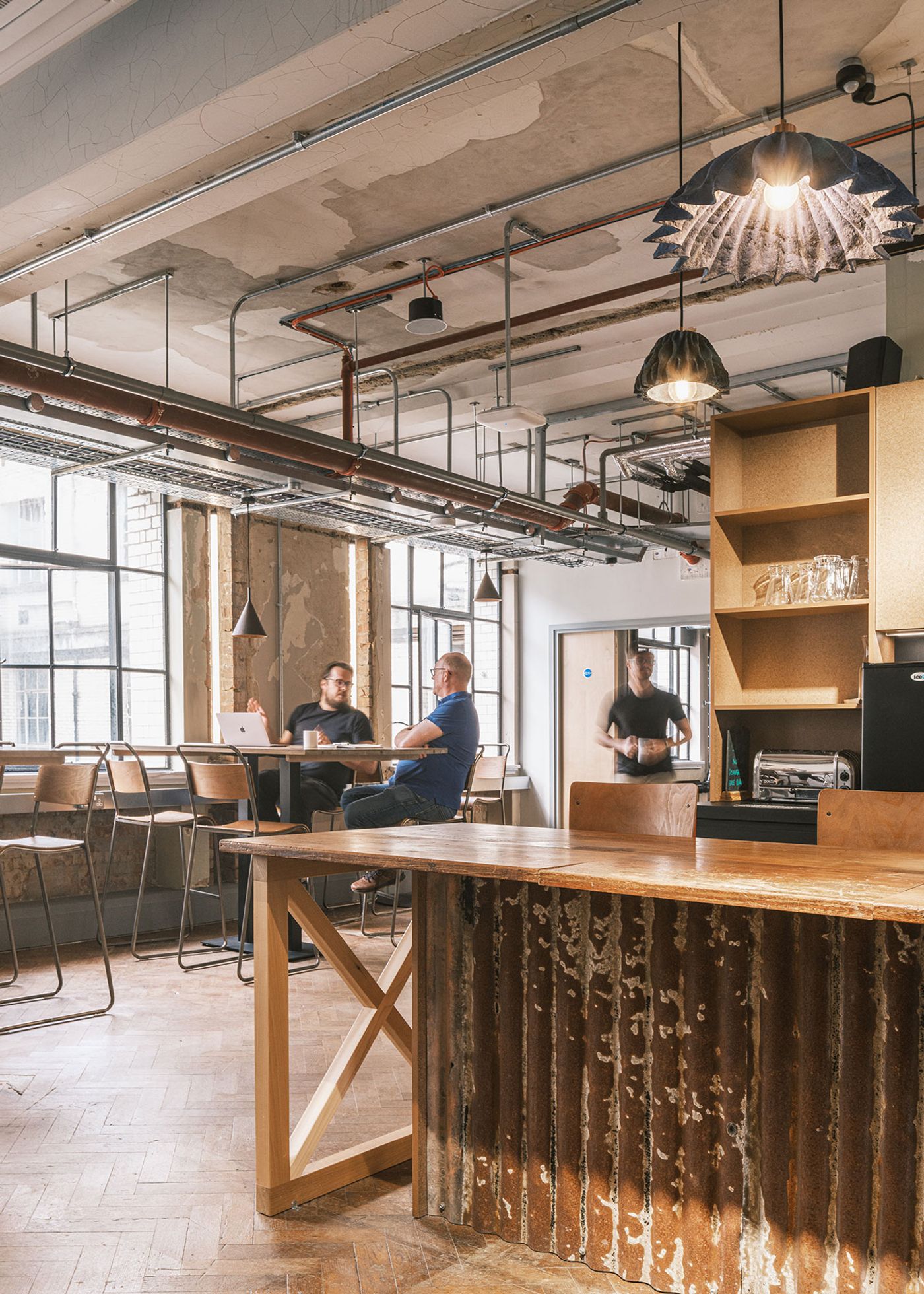
Photography by Fred Howarth.
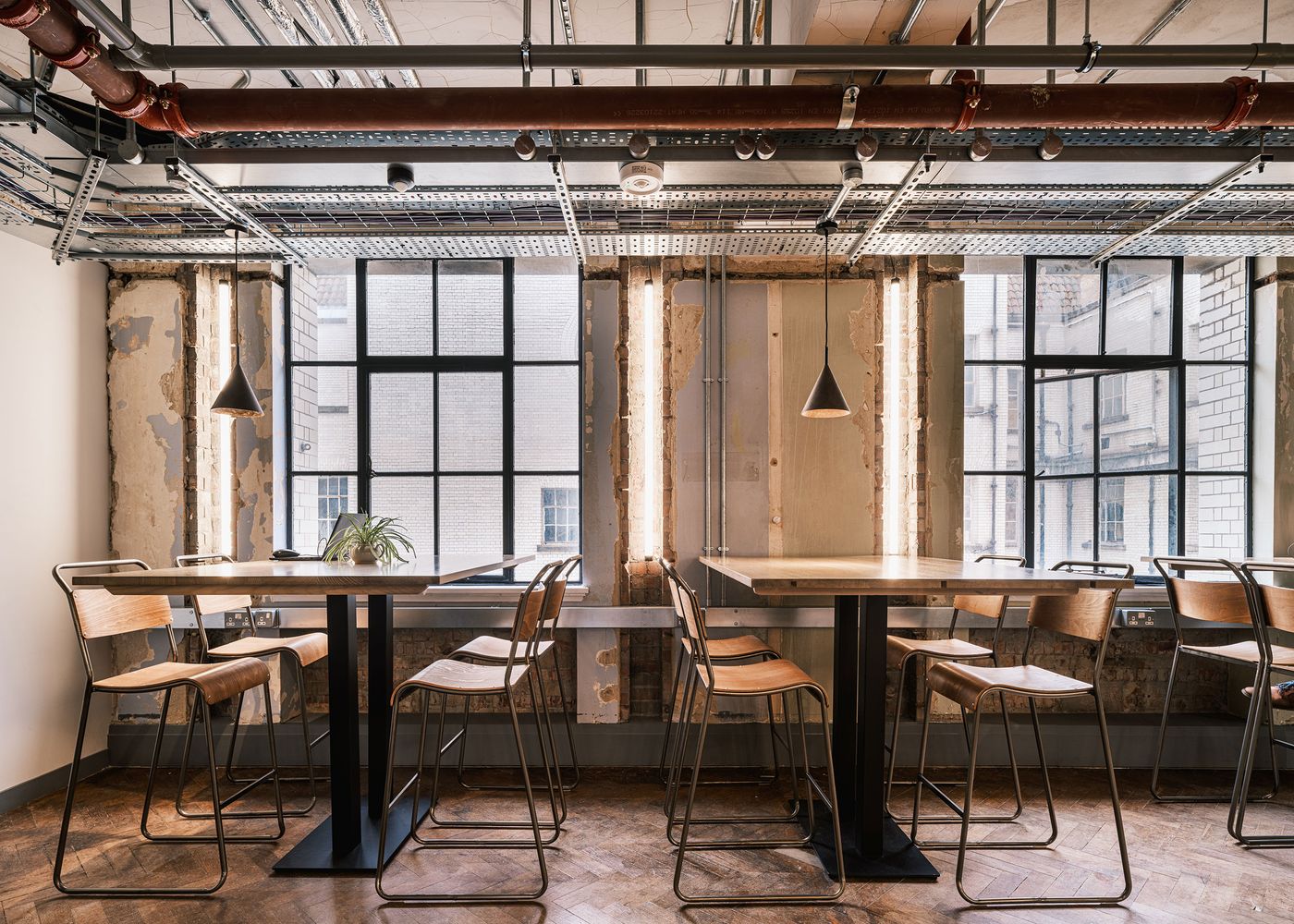
Photography by Fred Howarth.
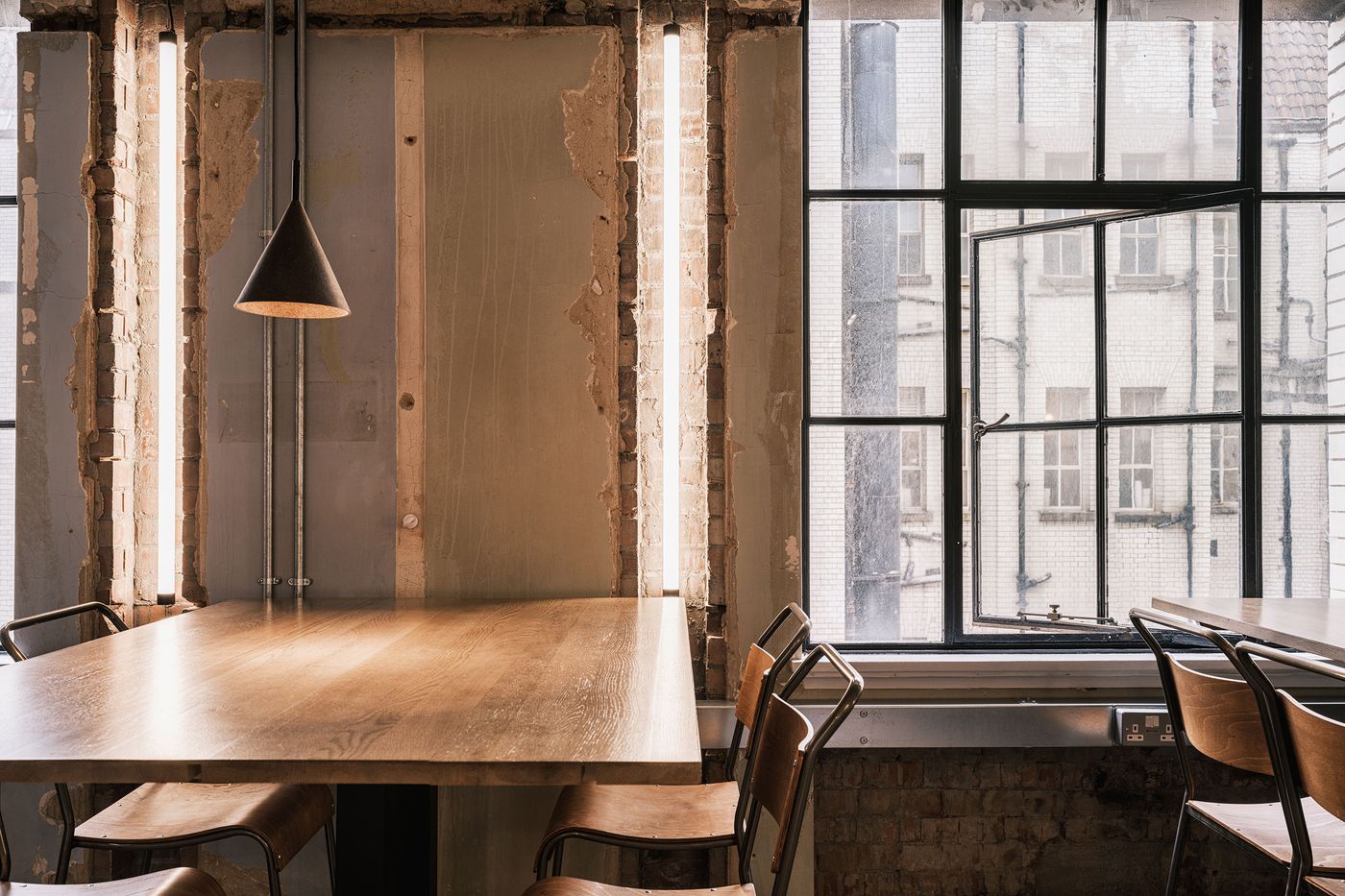
Photography by Fred Howarth.
The creative use of waste materials is evident in some of the new furniture, such as stools by Normann Copenhagen and Woodmancote Retro. The former is made out of recycled household and industrial plastic, while the latter is crafted from reclaimed hardwoods, locally grown wood, and 100% recycled cosmetic bottles. Floor rugs, also by Normann Copenhagen, are made from recycled PET bottles, and coffee tables have been created from reclaimed pallets. Alternatively, the selected furniture features environmentally friendly, low-carbon materials like recycled upholstery, certified timber, and wood derived from carbon-sequestering forestry. Throughout the space, these new pieces are mixed with reclaimed fittings and furniture sourced either from the site, external reclamation yards, or even a school in Norfolk.
This multi-pronged approach has resulted in a dramatic reduction in embodied carbon – according to calculations by the architects, the project boasts a saving of 1,150 tonnes of carbon compared to a typical office fit-out – and has also introduced a new aesthetic and material language in response to the climate emergency.
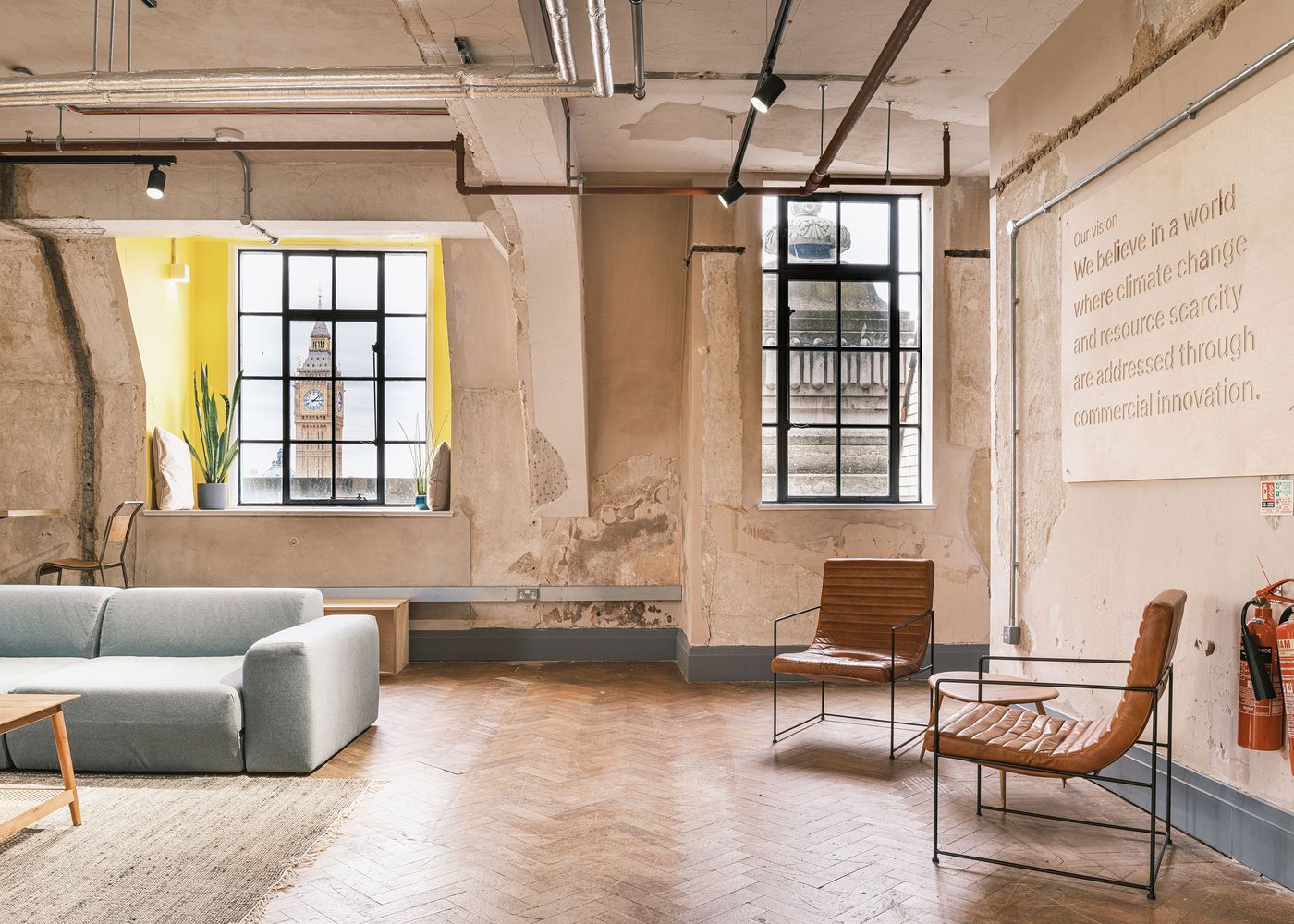
Photography by Fred Howarth.
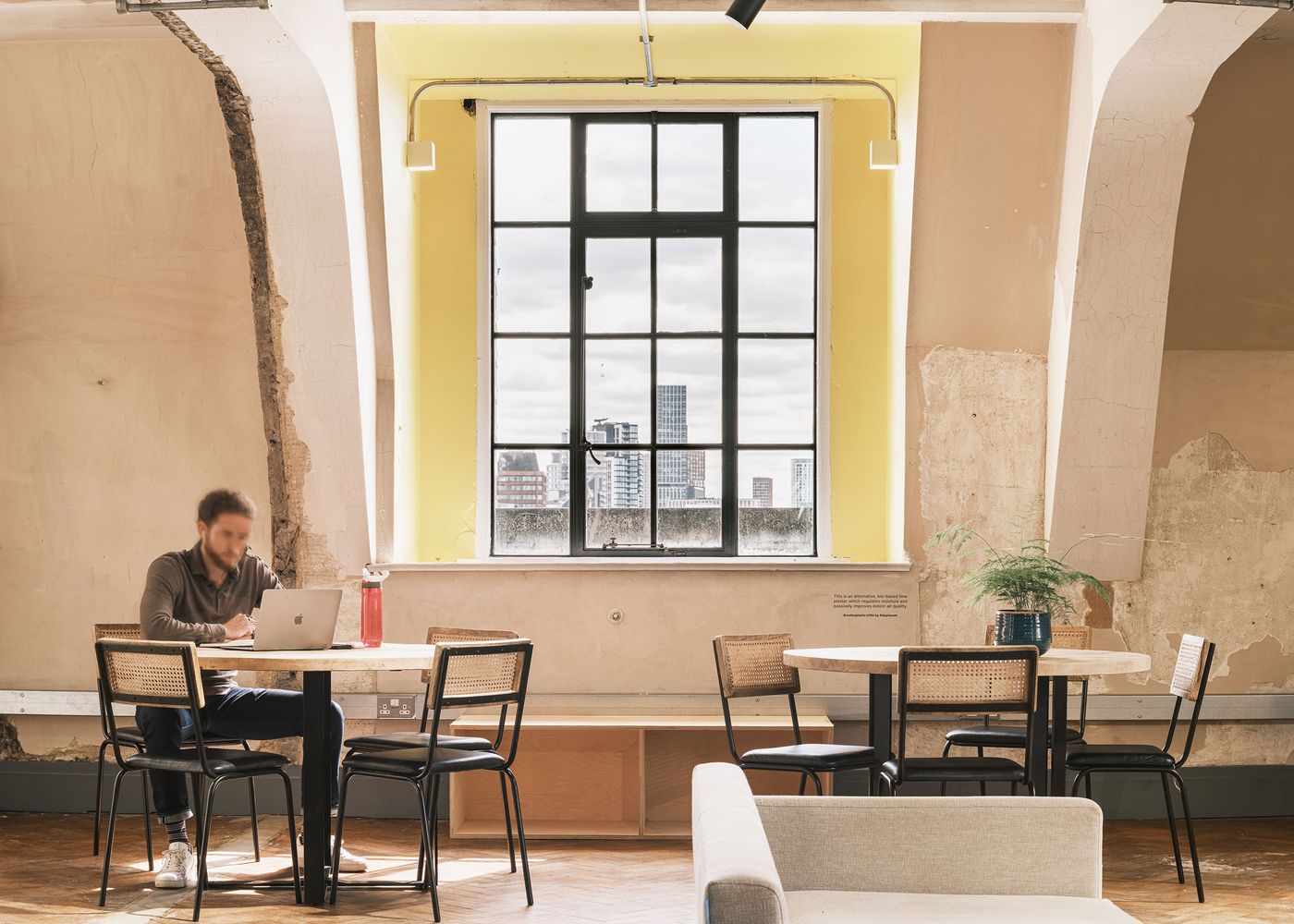
Photography by Fred Howarth.
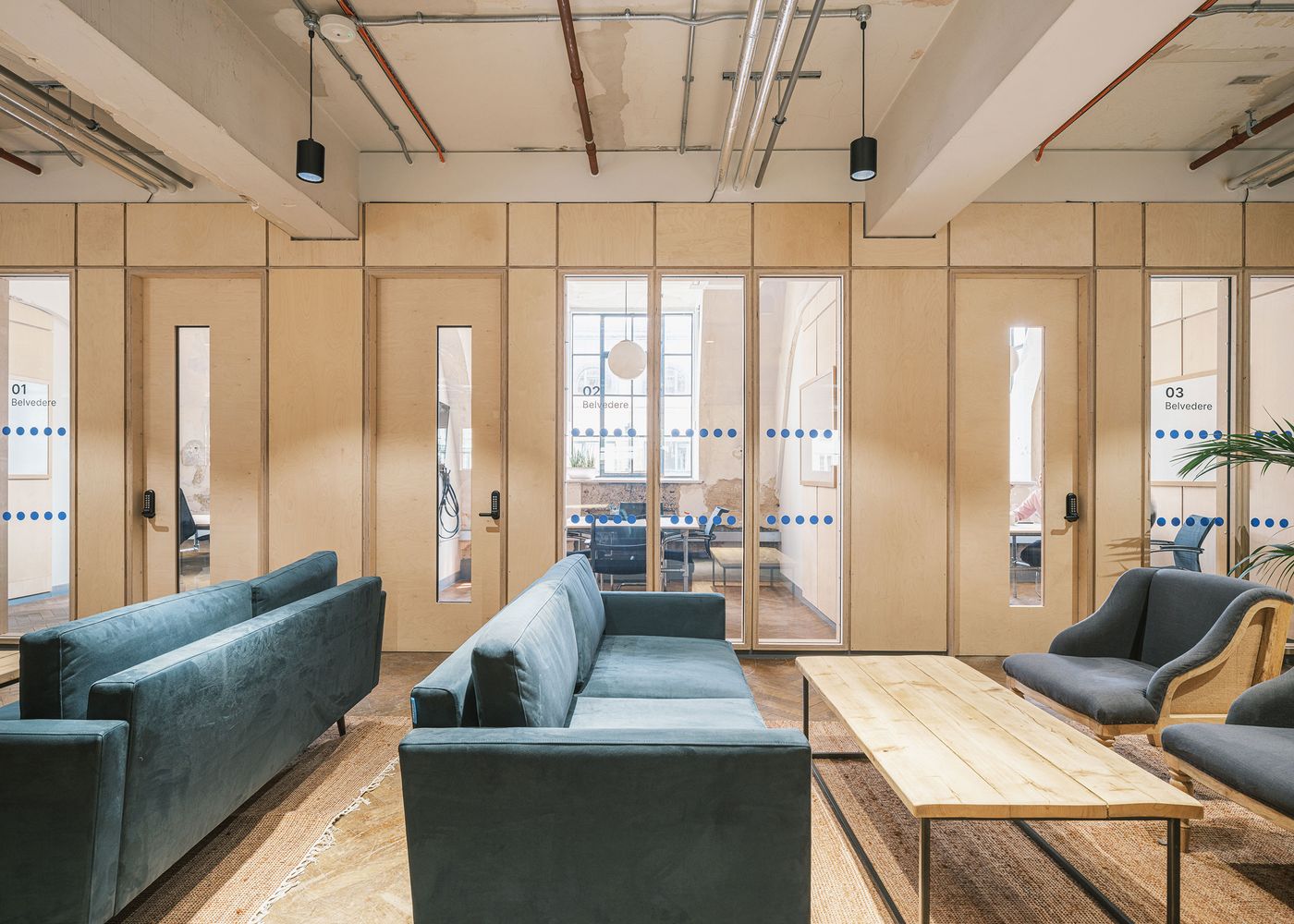
Photography by Fred Howarth.
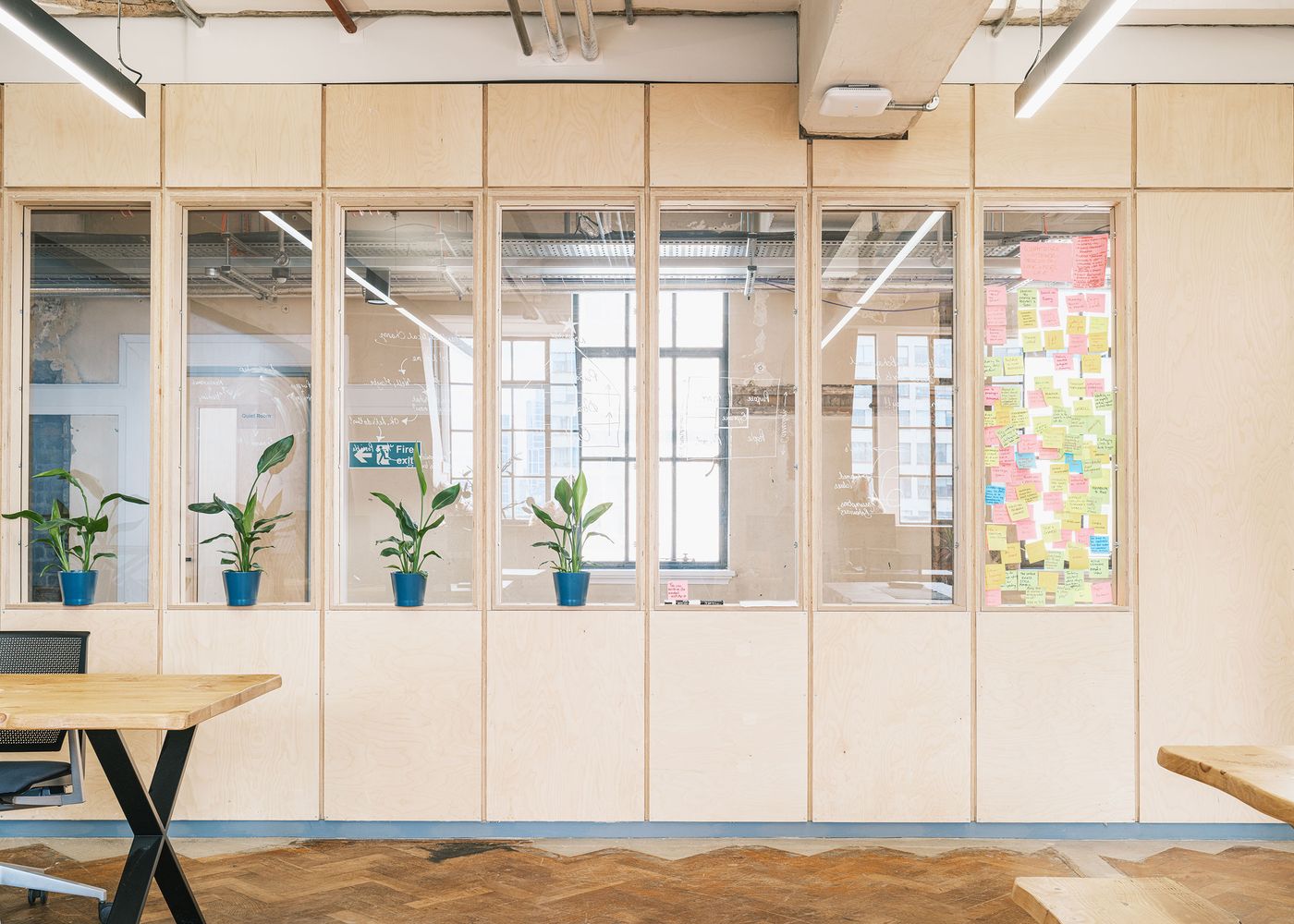
Photography by Fred Howarth.
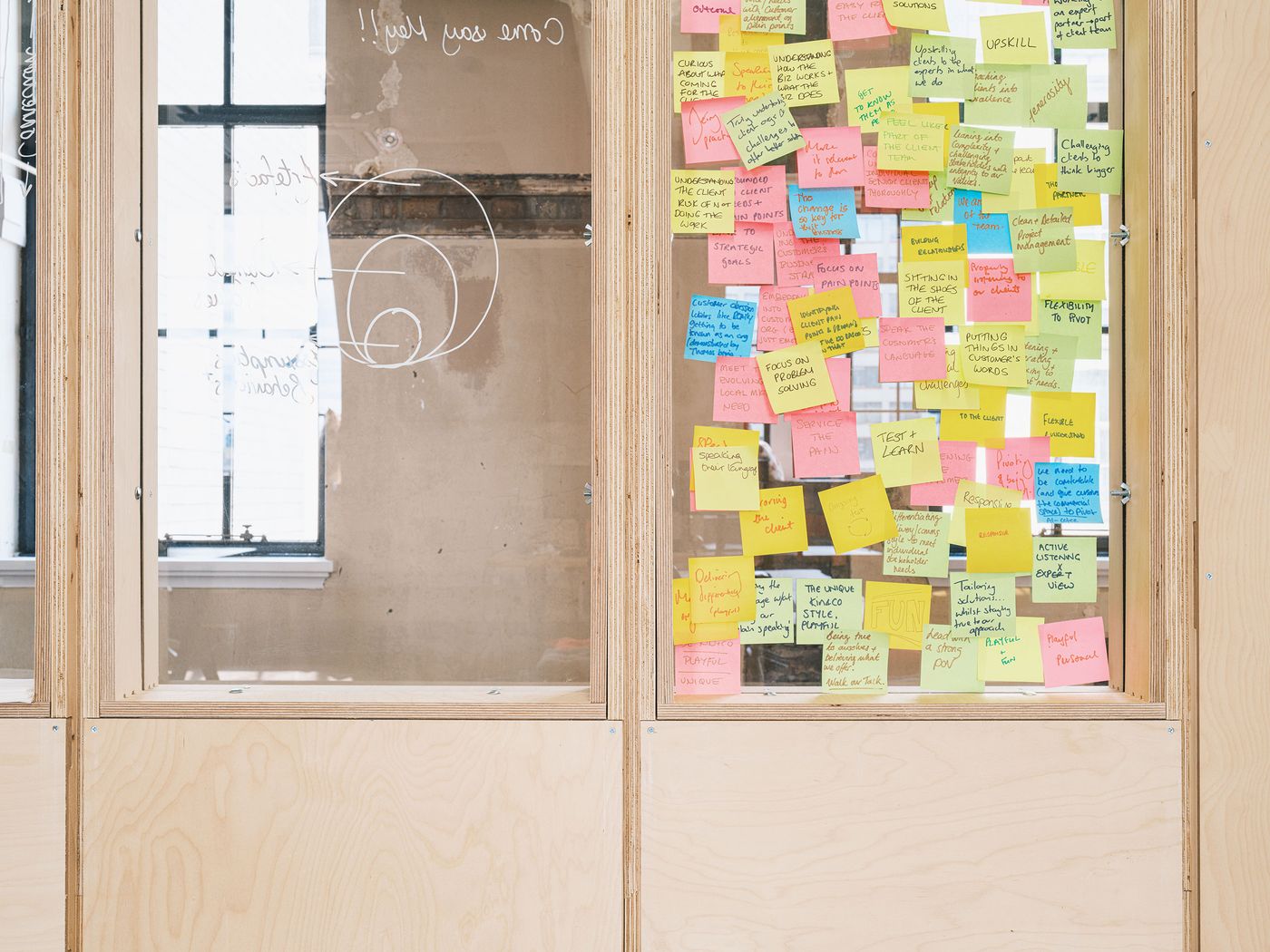
Photography by Fred Howarth.
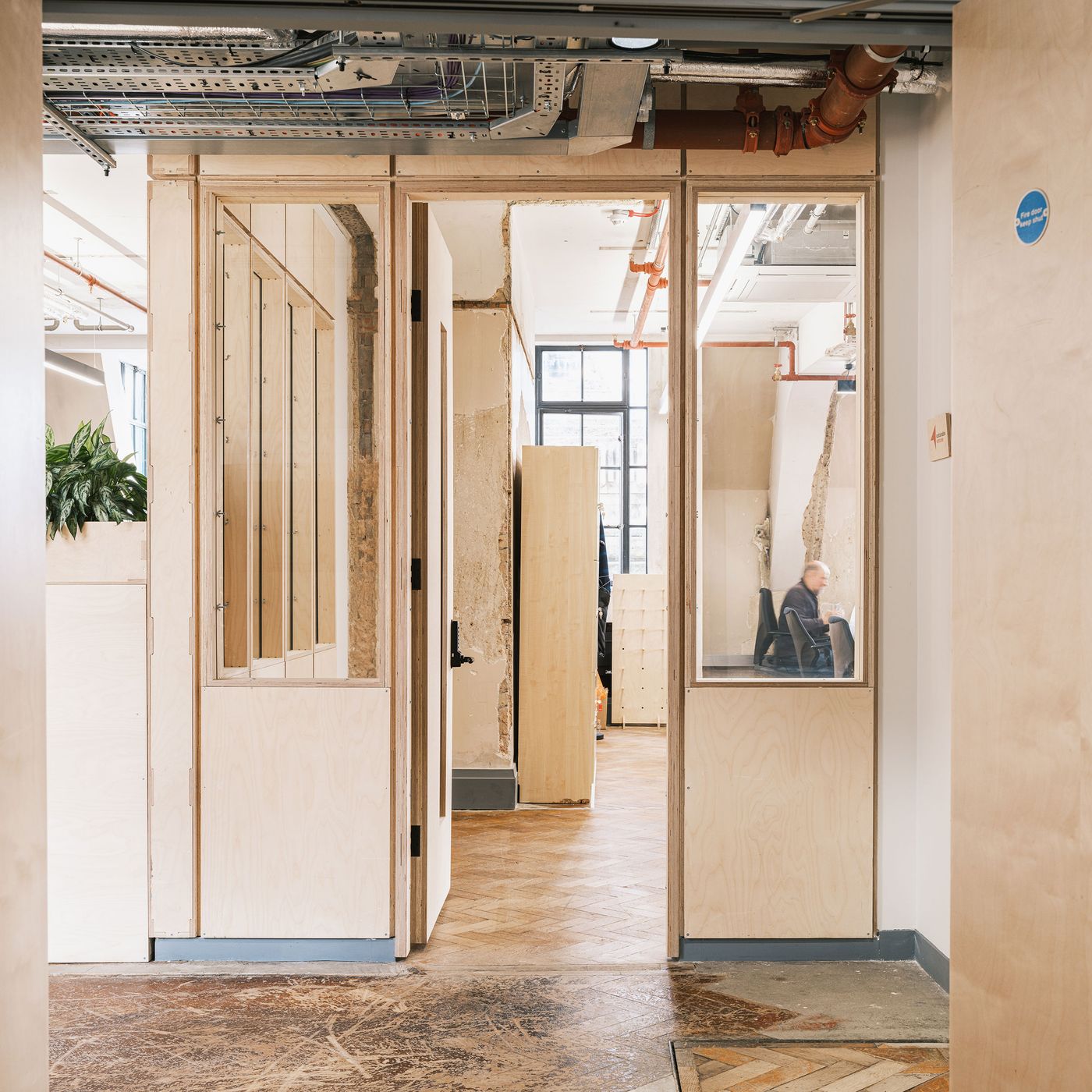
Photography by Fred Howarth.
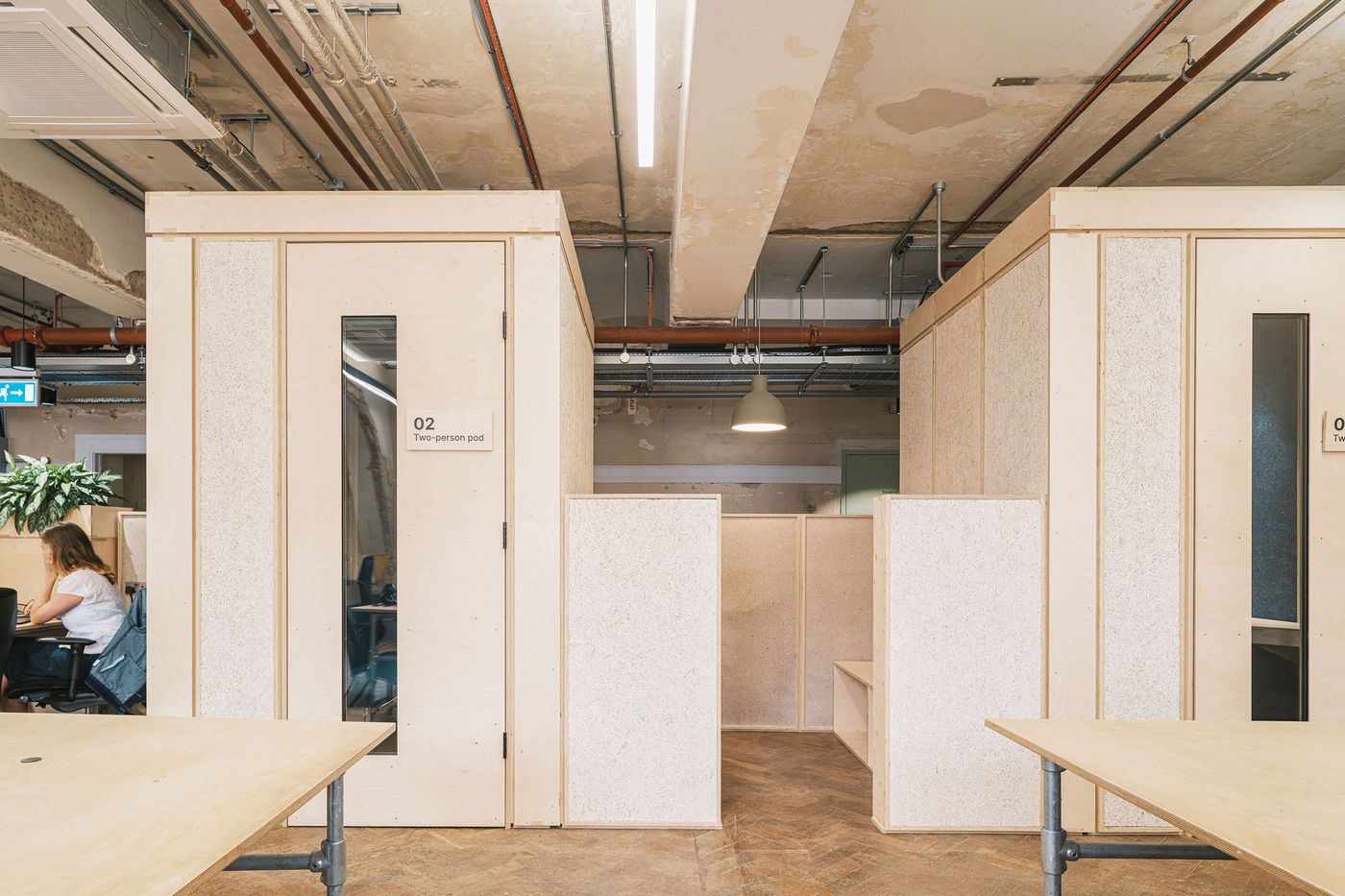
Photography by Fred Howarth.
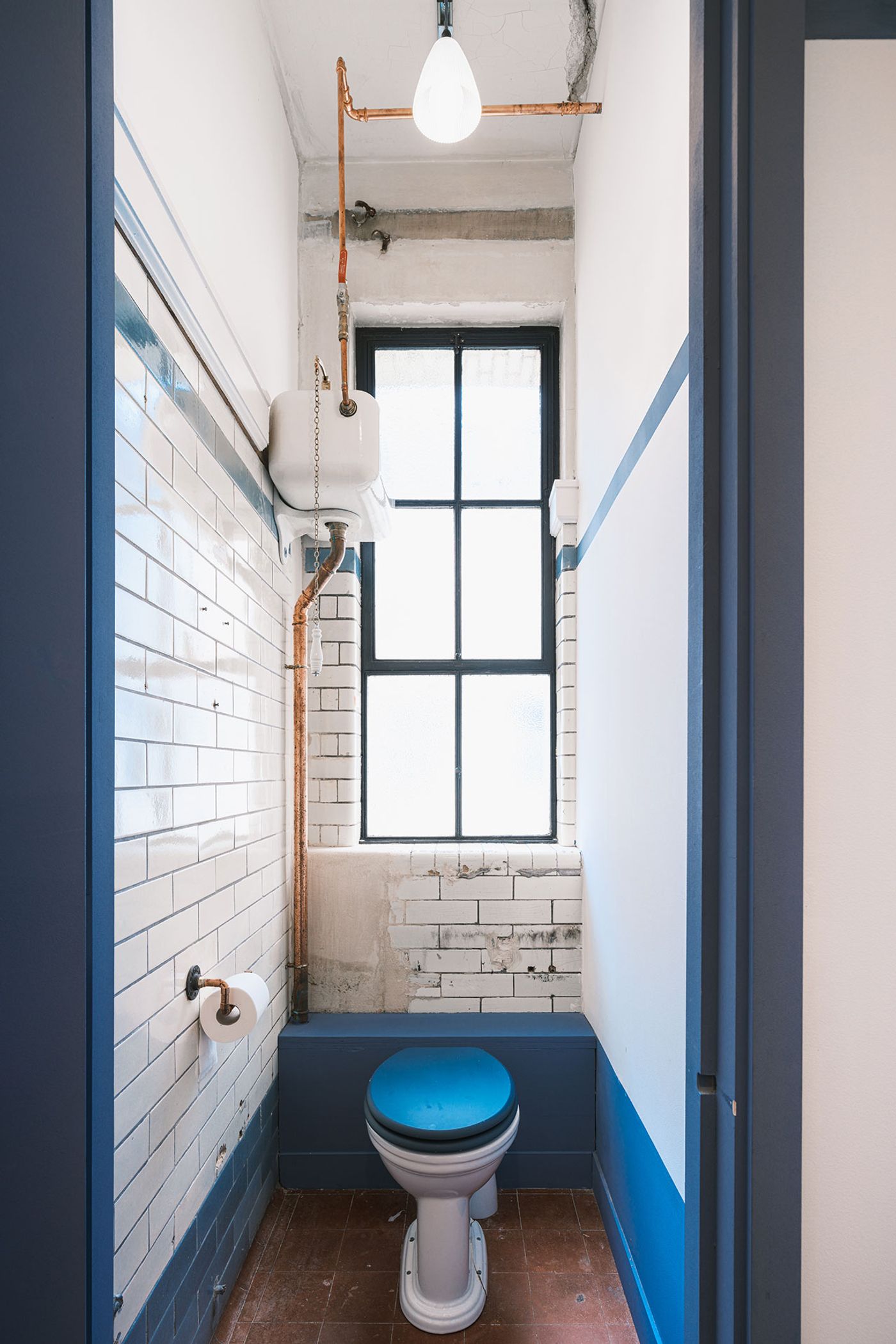
Photography by Fred Howarth.